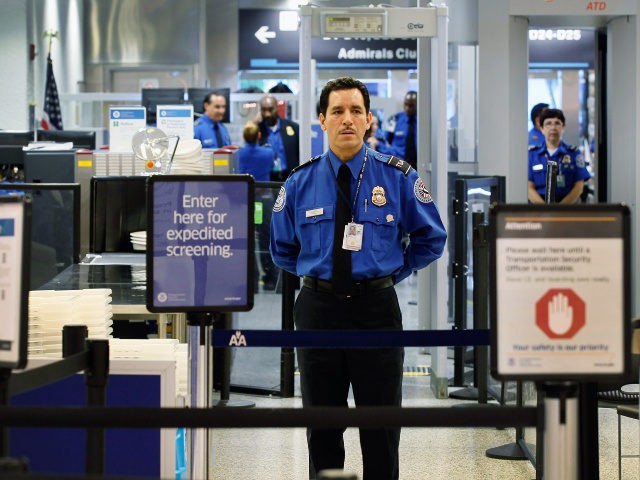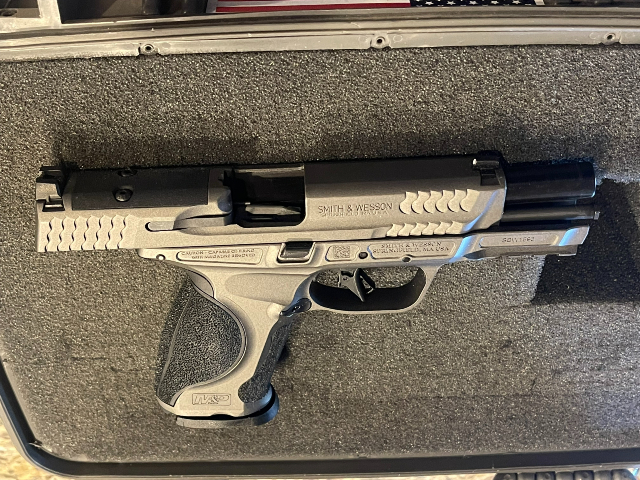Flying with a handgun is a viable option for hunters, sport shooters, and concealed carriers. but the Transportation Security Administration (TSA) sets forth strict rules and restrictions that must be followed.
This author follows TSA guidelines and checks a handgun on the plane almost every time he flies so he can carry concealed for self-defense once he reaches his destination, especially when flying to a Democrat-run city, where crime and civil unrest are very real parts of life.
How is a handgun properly checked in for a flight?
Here are two basic steps, summarized:
- To begin with, acquire an airline-approved hard case that is lockable. This author’s handgun case is roughly 14 in. by 12 in. and it has a hole at both front corners so that padlocks can be inserted and locked.
- Once you get your case and get it home, lock it and try to stick your hand inside it while it is locked. You will often see airline personnel do this when you declare a gun at the check-in counter. So a simple way to be sure you have the proper airline-compliant case is to be certain you cannot slip your hand into it while it is locked.
Once you have the proper case and the locks–and you have tested the case to be sure you cannot reach into it–the next step is to be sure the handgun is unloaded and, if it is a pistol, take time to lock back the slide, revealing the empty chamber. The magazine must also be empty–zero ammunition in the pistol or the magazine–and leave the magazine inserted in the gun.
When you enter the airport with the handgun in the case and reach the airline check-in counter you will declare that you are traveling with a firearm and airline personnel will ask you questions to ensure the gun is unloaded. They will have you fill out a small form with contact information, etc., and then your case will be carried to TSA agents for inspection. When the TSA agents open the case they are immediately looking for your empty chamber and empty magazine, so having the slide locked back to reveal both makes for easy work.
After the agents see that the gun is unloaded they will inspect the case to be sure nothing else is in it: Nothing under the foam on the bottom or above the form inlay up top. A residue/explosives test is done as well and then they lock the case up for you and take it to be loaded into the plane. Once you reach your destination your pistol case will be brought to the oversized bag area associated with your airline and you will show ID to get it from airline personnel.
What about ammunition?
You can have ammunition in the case as long as it is in an ammunition box that keeps it from rolling around (and possibly rolling out of the case during transport).
This author cut a rectangular hole in the foam in his handgun case and keeps a Sig Sauer ammunition box in that hole. When flying, he empties the rounds out of his magazine and places them in the ammo box, which is secured by the foam inlay:
TSA is unforgiving when it comes to mistakes in packing and transporting firearms into and through airports, so take time to read their guidelines word for word on their “Transporting Firearms and Ammunition” webpage.
Also, understand that each major domestic airport does things a little differently.
For example, at some airports, once you have declared you are traveling with a firearm, your case will be taken from you at the check-in counter and examined by TSA agents behind the scenes. You will not see it again until you reach the oversize luggage area at your final destination.
Additionally, remember that the summarized steps shared in this article apply to domestic flights only. Also remember that you must consider the rules of the state/city into which you are flying. If you are flying into a heavily gun-controlled state, you may be breaking local laws once you take possession of your firearm at your destination airport, so be sure you familiarize yourself with state and locals laws, as well as the TSA guidelines.
AWR Hawkins is an award-winning Second Amendment columnist for Breitbart News and the writer/curator of Down Range with AWR Hawkins, a weekly newsletter focused on all things Second Amendment, also for Breitbart News. He is the political analyst for Armed American Radio and a pro-staffer for Pulsar Night Vision. He was a Visiting Fellow at the Russell Kirk Center for Cultural Renewal in 2010 and holds a Ph.D. in Military History, with a focus on the Vietnam War (brown water navy), U.S. Navy since Inception, the Civil War, and Early Modern Europe. Follow him on Instagram: @awr_hawkins. You can sign up to get Down Range at breitbart.com/downrange. Reach him directly at awrhawkins@breitbart.com.



COMMENTS
Please let us know if you're having issues with commenting.